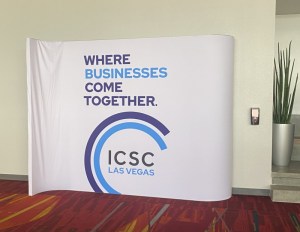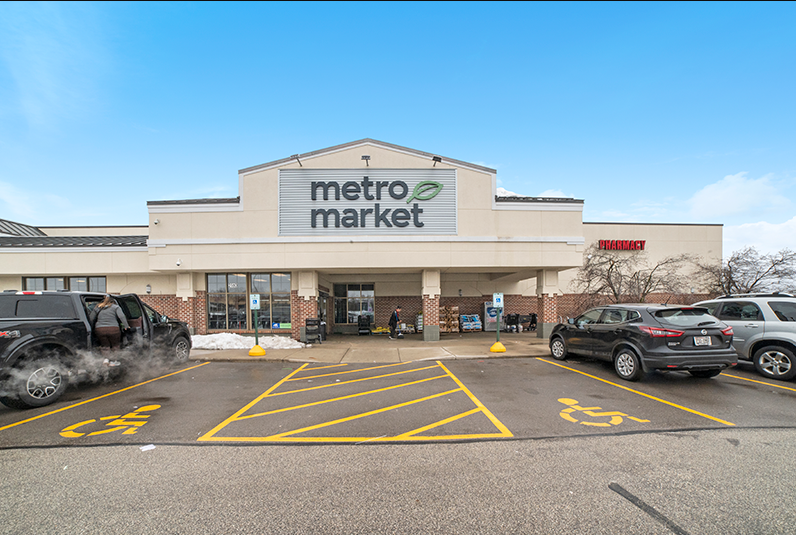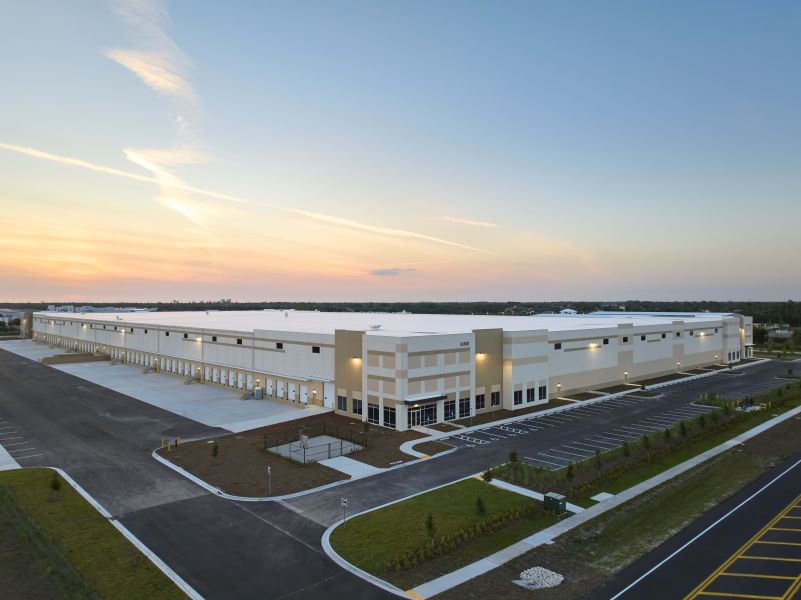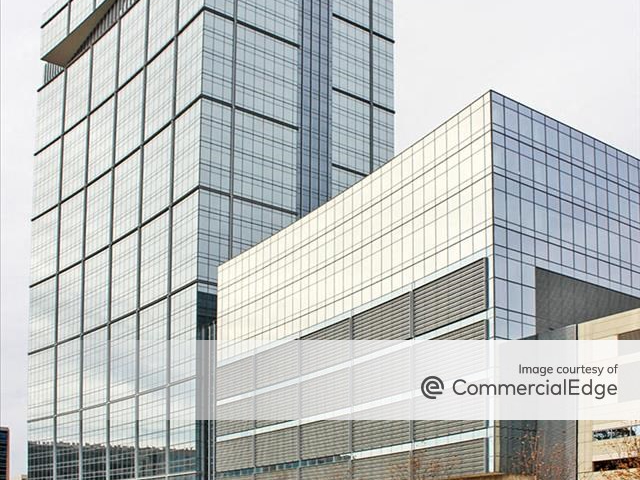ICSC Special Report: Retail’s the ‘Belle of the Ball’ Again
The tone in Las Vegas was upbeat as attendees talked about the economic landscape, strong demand for assets and opportunities in urban renewal.

ICSC Las Vegas was held from May 19th to May 21st, 2024. Image by Fotios Tsarouhis
The doyens of the retail real estate world struck a sunny tone on the sidelines of ICSC Las Vegas this week, with several telling Commercial Property Executive that the sector is healthier than it has been in years.
“This is the first time people are saying ‘optimistic’ without putting ‘cautious’ in front of it,” Kristin Mueller, president of JLL’s Retail Property Business, told CPE.
Mike Sladich, regional managing director for the Commercial Investment Sales team in Northmarq’s Atlanta office, pronounced the sector “alive and well”, recalling that “retail, a few years ago, was kind of a bad word, and now it’s the belle of the ball again.”
“The retail fundamentals, in terms of retailer performance and retail real estate, could be at one of their best points in history,” said Daniel Taub, national director of Marcus & Millichap’s Retail Division and Net Lease Division. “You have now been experiencing 10-plus years of very little to no net new development; therefore, existing retail real estate has become more valuable, because there’s less new product. The consumer has continued to do what they do best: two-thirds of GDP is consumption.”
Sun Belt states continued to dominate discussions. “That’s where the population is, and we’re all about people,” said Mueller. “Retail follows rooftops.” However, she added that the demand for retail properties remains robust nationwide.
READ ALSO: Street Retail Surges Toward Full Recovery
“The Sun Belt is easy to sell because people are moving there, there’s just a lot of growth,” Sladich told CPE, who noted that retail is booming across the U.S. due to high demand and low unemployment.
Still, “occupancy and rent growth are amazing” in the Sun Belt, according to Ryan Ash, vice president of development at Vestar. The firm’s primary growth-focus markets are West Texas, California, Arizona, Utah and Colorado, with Vestar particularly focused on the Phoenix metro. “Arizona is the one where the population has exploded,” said Ash. “That’s really where we see growth right now.”
Education, health care and revitalization
Retail’s approach to anchor tenants and how to organize properties is evolving, with new assets incorporating all types of grocery, entertainment, education, health-care and life science uses.
“We’re becoming much more diverse through our leasing efforts,” said Mueller, whose firm has developed lifestyle centers with various kinds of anchor tenants, including athletic facilities.
As much as real estate is a business that follows major trends and money, new opportunities can often arise from the needs of downtown areas undergoing revitalization.
“What we love to do is go into underserved communities and bring in quality essential goods and services,” Cary Lefton, CEO of Agora Realty & Management, told CPE. North Las Vegas, Nev., home to several Agora projects, is exactly that kind of municipality. “We saw that there was a tremendous void in the northeast valley of this southern Nevada area.” Agora initially redeveloped a retail center in the city and eventually acquired property owned by the local government to develop further projects.
“Our tenants were doing three times the national average” at the initial property, said Lefton, “and we were thrilled that our tenants were doing so well, but the city was also thrilled that we turned around a blighted center and made it vibrant, and new and thriving.”
Agora’s public-private collaboration with North Las Vegas’ government allowed the firm to meet city needs, like more access to health care, employment and education, Lefton said. “They shared with us what they would like to see, and there was a lack of health care, there were still additional needs for essential goods and services.” The company is also partnering with a state university on a satellite campus in the area.
Among Agora’s North Las Vegas projects was a medical office building, representative of an asset class that has begun to play an increasingly prominent role in retail.
From community colleges to charter schools, educational institutions are becoming a focus for developers, said Mueller. And it’s the same for health-care assets.
“I think a trend across our portfolio is bringing in more health and wellness tenants,” Ash agreed.
Even prior to COVID-19, there had been a trend toward the opening of more urgent care centers. “We’ve seen that be wildly successful and almost every one of our properties now has an urgent care,” said Ash, noting that the advent of telemedicine and small-format general practices is influencing the trajectory of medial retail space.
In Newark, N.J., education is already a major part of life in a city where renewal efforts are drawing in younger residents and more entrepreneurs. Home to one of Rutgers University’s campuses, as well as the New Jersey Institute of Technology and Essex County College, Newark aims to help local residents open businesses even as it welcomes new investors, and many of the efforts are associated with the arts.
“We work very closely with the mayor and with the city hall to make sure that everybody, residents and business owners alike, are benefiting from all the investment and development that is happening,” said Marcus Randolph, CEO of Invest Newark. “We really honor the people that are already here, but we want you to join the community.”
New ground-floor retail has been an important part of the city’s retail landscape as more residential properties have come online. In turn, retail opportunities have emerged as parts of Newark have grown. “It’s a growing community, it’s going to need amenities and services,” said Randolph.
Staying location
“Retail has been as battle-tested as any asset class, between the creation of Amazon, the internet and e-commerce shopping, and COVID,” said Taub. “It has weathered and probably come out on the better side of all of those.
The past few years have ensured that physical retail spaces are here to stay, said Taub, even if they need to be reconfigured, something many stores have begun to do.
Sladich agreed, saying “people don’t want to be just completely sedentary and have everything delivered to them… there’s some stuff people want to go and touch and feel.”
Macro concerns
Concerns over monetary policy impacting investing remained a constant theme throughout the conference. “There’s still a lot of dry powder out there,” said Sladich. “There’s a lot of cash chasing deals. It’s definitely not a capital issue per se, it’s more of just a need to get financing.
“The investor demand, whether it’s private capital or institutional capital, is bountiful,” said Taub. “That’s not an issue in the equation.” However, the volatility in the capital markets remains a top factor in the number of transactions. “The volatility in the capital markets and the cost of capital have created an impasse on the bid-ask spread between sellers and buyers and sellers are loath to sell, because they’ve got a high performing asset class, there’s demand on the leasing side, they’re getting rent growth, properties are cash flowing.”
In the current climate, developers and property owners have been dealt the best hand, said Taub. High-performing assets mean that, in many instances, owners do not need to sell. However, demand for quality retail assets remains high.
“Sellers are not in a situation, for the most part, where there’s a force behind them that is making them have to become a seller,” said Taub. “They’re deciding in many instances to be a seller if they can achieve a certain amount of pricing. The good thing is that there’s plenty of capital from the demand side that wants to invest in retail because of the long-term sustainability that we’ve been witnessing.”







You must be logged in to post a comment.